The Craziest Beauty Practices Throughout History
Diets that come with a risk of serious infections, deadly cosmetics that drive you mad before ultimately killing you, and extreme body modifications may sound strange to us, but these were perfectly acceptable beauty hacks throughout history.
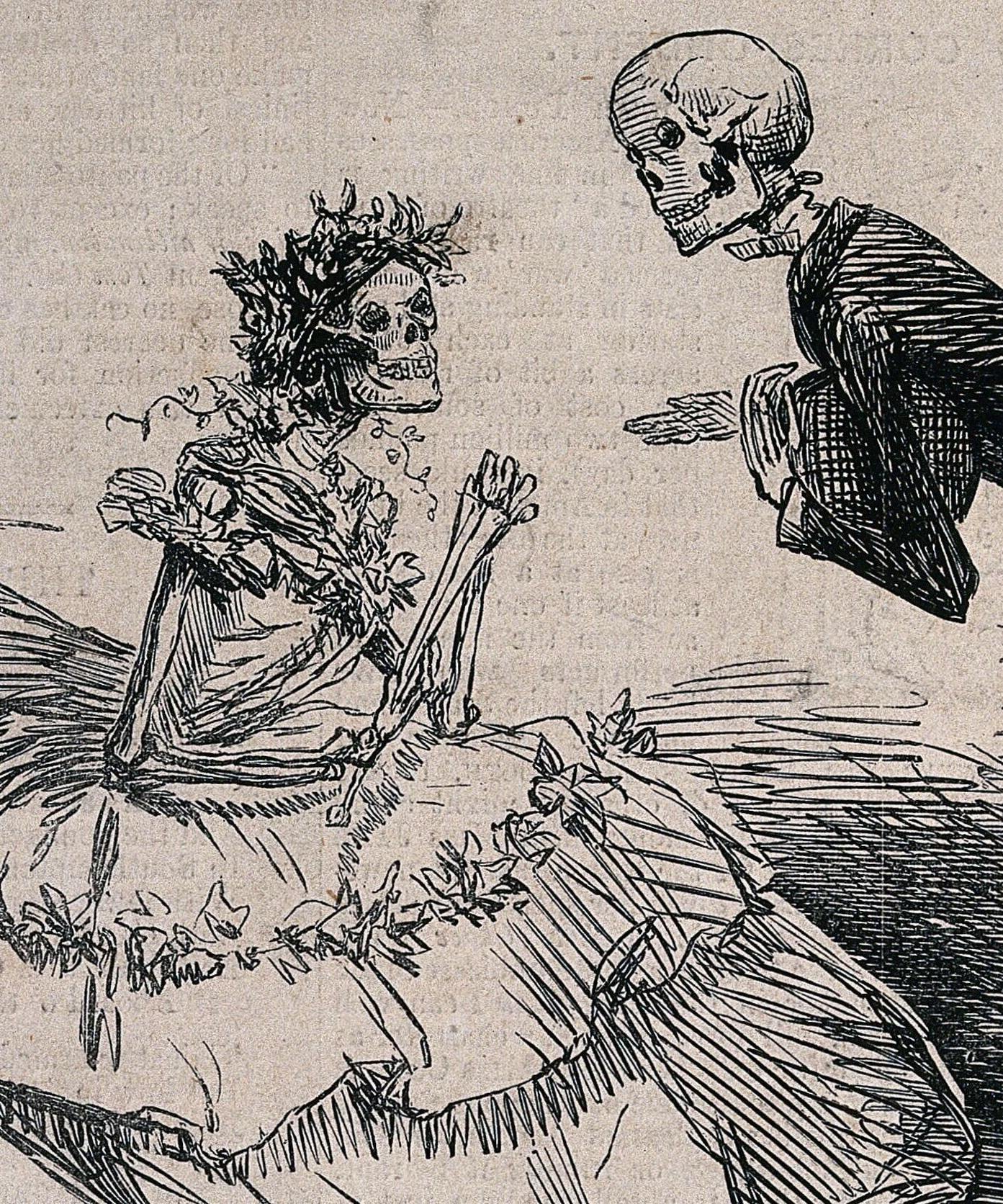
There are plenty of modern cosmetic practices that run the gamut from physically painful to medically risky. But most don’t hold a candle to the hazardous cosmetic techniques of earlier periods.
Check out these historic beauty practices that are even scarier (and more painful) than the modern ones we have today.
Foot Binding in China
One of the most bizarre and horrifying beauty practices in history is the Chinese custom of foot binding.
Foot binding is said to have been inspired by a 10th-century court dancer named Yao Niang, who bound her feet into the shape of a new moon. She entranced Emperor Li Yu by dancing on her toes inside a six-foot golden lotus festooned with ribbons and precious stones.
In addition to altering the foot's shape, the practice also produced a particular sort of gait that relied on the thigh and buttock muscles for support.
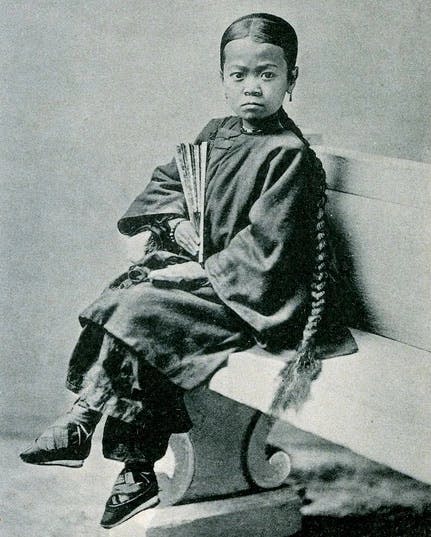
Chinese girl with bound feet, 1892, via Wikimedia Commons.
From the start, foot-binding was imbued with erotic overtones, and it quickly became a status symbol among the wealthy elite. For families with marriageable daughters, foot size translated into its own form of currency and a means of achieving upward mobility.
Therefore, the ritual of foot-binding would typically begin when a girl was between 4 and 7 years old. All of her toes, except the big toes, were broken, and her feet were wrapped with binding cloth to prevent them from growing to normal size.
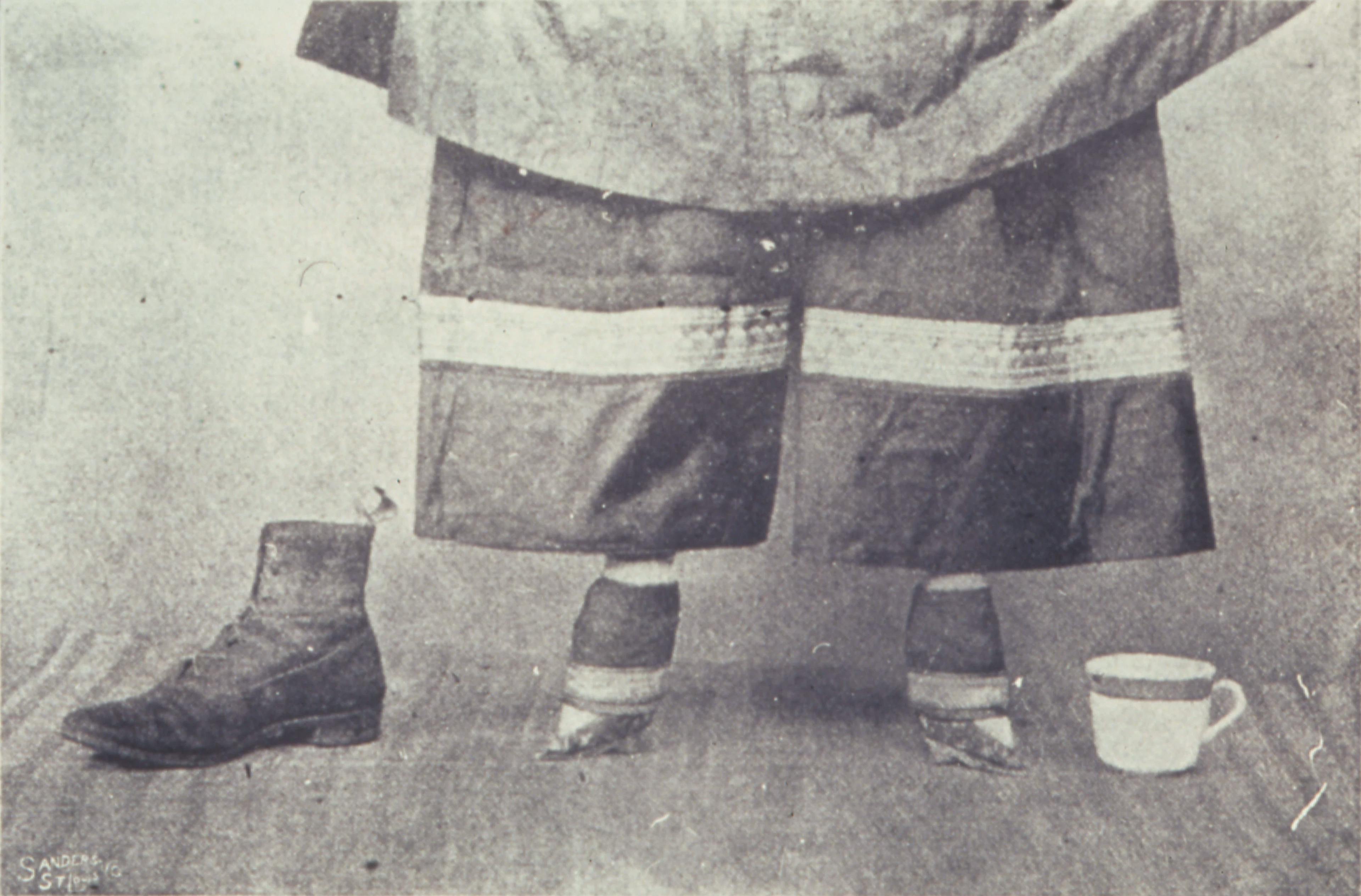
A Chinese lady's feet contrasted with a boy's shoe and a cup, ca. 1900-1919, via Wikimedia Commons.
The most desirable bride possessed a three-inch foot, known as a “golden lotus.” It was respectable to have four-inch feet (a silver lotus), but feet five inches or longer were dismissed as iron lotuses. The marriage prospects for such a girl were indeed dim.
Black Lacquered Teeth in Japan
Whiter teeth might be popular now, but it was quite the opposite for hundreds of years in Japan.
Ohaguro, or teeth blackening, was a common practice beginning in the Heian period (8th-12th centuries) and continuing in subsequent centuries. It was originally practiced by the upper class, particularly women. But by the 19th century, it had spread to other social classes too.
Ohaguro was done by married women, single adult women, prostitutes, and geishas. A young bride would dye her teeth black for the first time just before entering her husband’s home.
It was also practiced within the Yoshiwara pleasure quarter, where a kamuro (apprentice) who was about to come of age and accept her first customer would collect the ingredients from seven friends and dye her teeth for the first time, just as the soon-to-be bride would collect the ingredients from friends and family before her wedding.
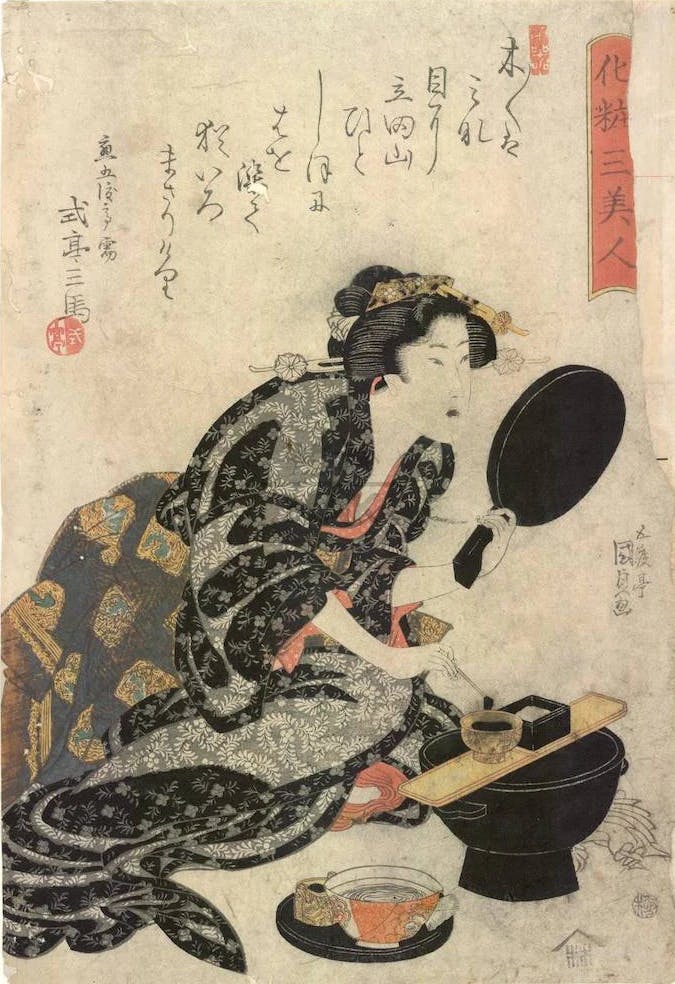
Japanese art depicting woman blackening her teeth, circa 1815, via Wikimedia Commons.
To blacken their teeth, Japanese women used Fushi powder, made from the gallnuts of the Japanese sumac tree, and combine it with kanemizu, made by fermenting iron filings in an acidic mixture of tea, vinegar, and rice wine.
This process produced a black, foul-smelling dye which could then be painted on the teeth or drunk. To improve the taste, spices such as cinnamon, cloves, and anise would be added. Once dry, it provided a rich black lacquer coating, but unfortunately, it faded quickly, and the process had to be repeated every two to three days to maintain a beautiful set of blackened teeth.
Ohaguro was banned in 1870, as part of the Japanese government’s attempts to modernize the country. The cultural movement away from teeth blackening was aided in 1873, when the Empress of Japan appeared in public with white teeth.
Extreme Corsetry in 19th Century Europe
Beyond fitted, tight, or anywhere in between, corsetry has a long history that stretches far beyond our current assumptions.
Manipulating the body through the use of undergarments stretches back as far as antiquity, when Minoan women from the island of Crete bound their breasts with a band of soft wool, called apodesmos.
But with the apodesmos, the body still played an important role in shaping the clothes wrapped around it. It wasn’t until the medieval era that the body was considered an object that needed to be obscured or changed.
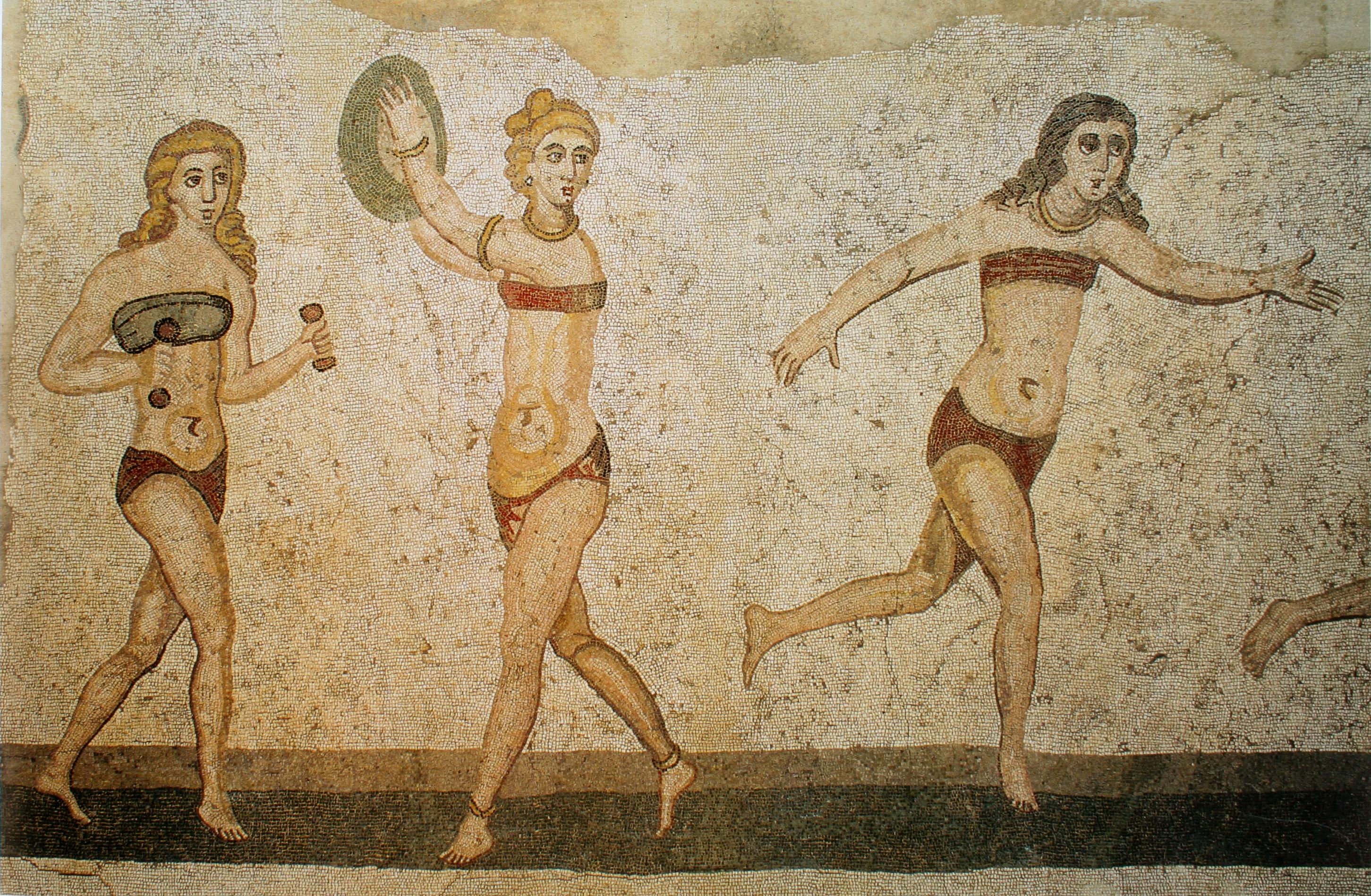
The ancient Roman Villa Romana del Casale (286–305 AD) in Sicily contains one of the earliest known illustrations of a bandeau (a breast band), via Wikimedia Commons.
Nonetheless, the earliest corsets were simple shaping garments, often only made with linen, satin, and cotton cording for shaping. It first appeared in the 1300s to describe a soft, fitted bodice that nipped in the waist and was worn over a linen shift.
However, more dramatic shapes appeared throughout the centuries, especially in the 1800s when more dramatic corset shapes stepped onto the high fashion scene. Using whalebone for stability, corsets during this time shaped the waists and busts of women depending on the look du jour.
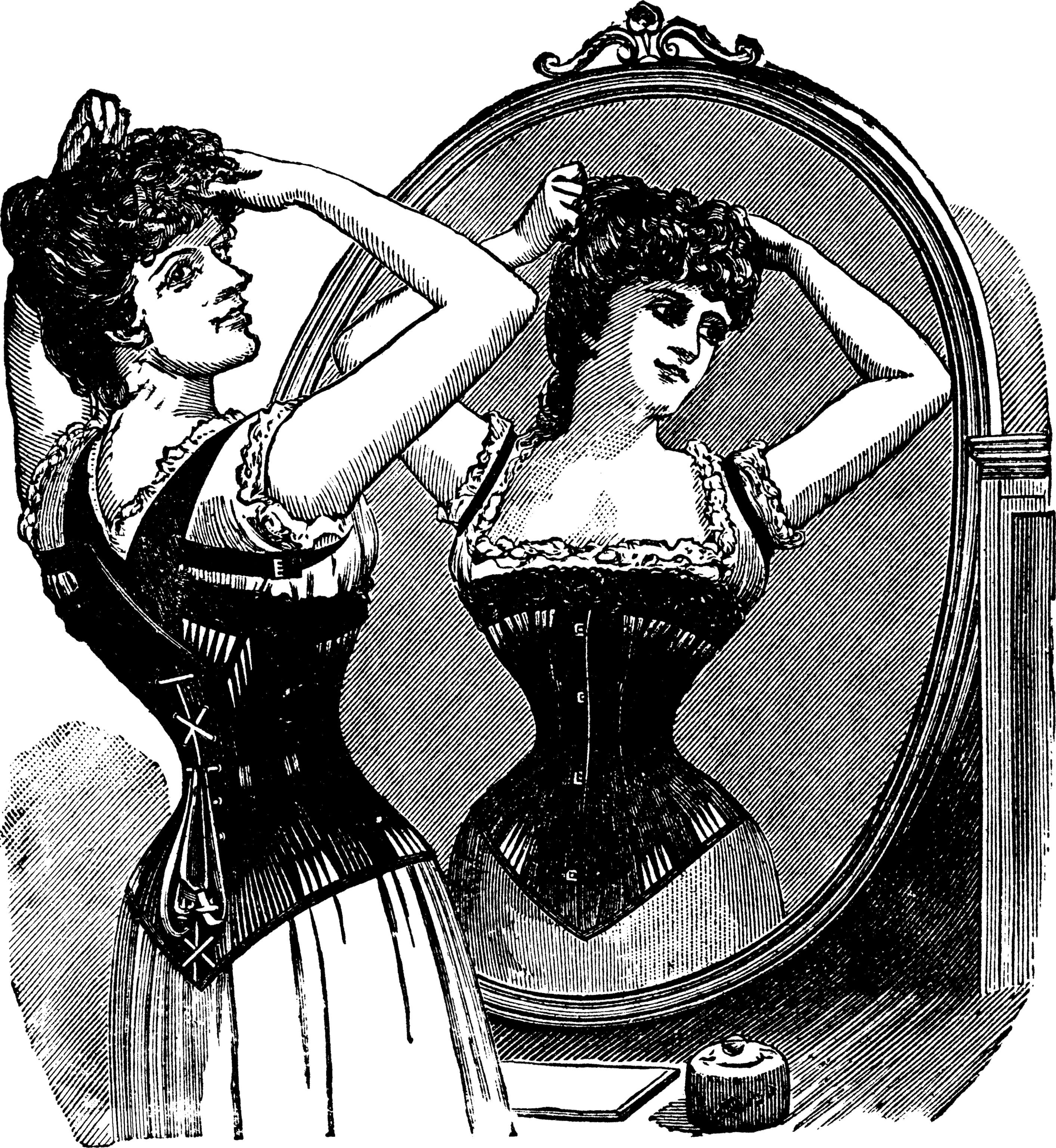
Advertisement for the Invigorator Corset, 1893, via Wikimedia Commons.
The 1890s saw an obsession with comically small waists and large bosoms. This look was achieved through a combination of corset shapes and a lot of padding. It was common for women to pad their bust and hips to give the illusion of a smaller waist.
In fairness, it was very uncommon for women to tighten their corsets to the point of injury, and probably none of them achieved the 14-inch waist advertised in 19th-century fashion magazines.
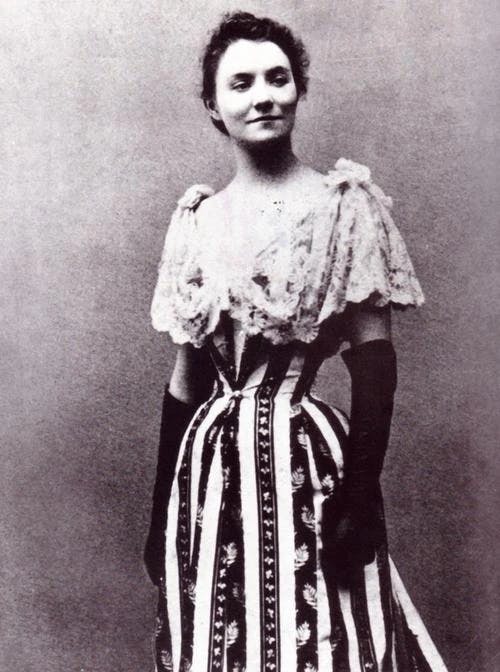
Yvette Guilbert, a French cabaret singer and actress, circa 1890s, via Wikimedia Commons.
Some women were so obsessed with appearing to have a tiny waist that they manipulated photos using the 19th-century version of Photoshop. Photographers would paint over the sides of a woman's waist to make it appear smaller than it really was.
Other than just using corsets to fake or accentuate their body shape, women incorporated bustles, bum pads, and even sleeve supports in Victorian England to achieve some of the more exaggerated silhouettes that came into fashion.
Tapeworm Diet in England
Beauty starts from the inside out, and maintaining a trim, slim figure was particularly prized in England during the Victorian era.
One particularly unappetizing beauty regimen was the “tapeworm diet,” where people looking to shed pounds would swallow a tapeworm egg, which would hatch and take up residence in their stomach. It was thought that the worms would divert the excess calories to their own bodies and grow larger and larger until they had to be removed.
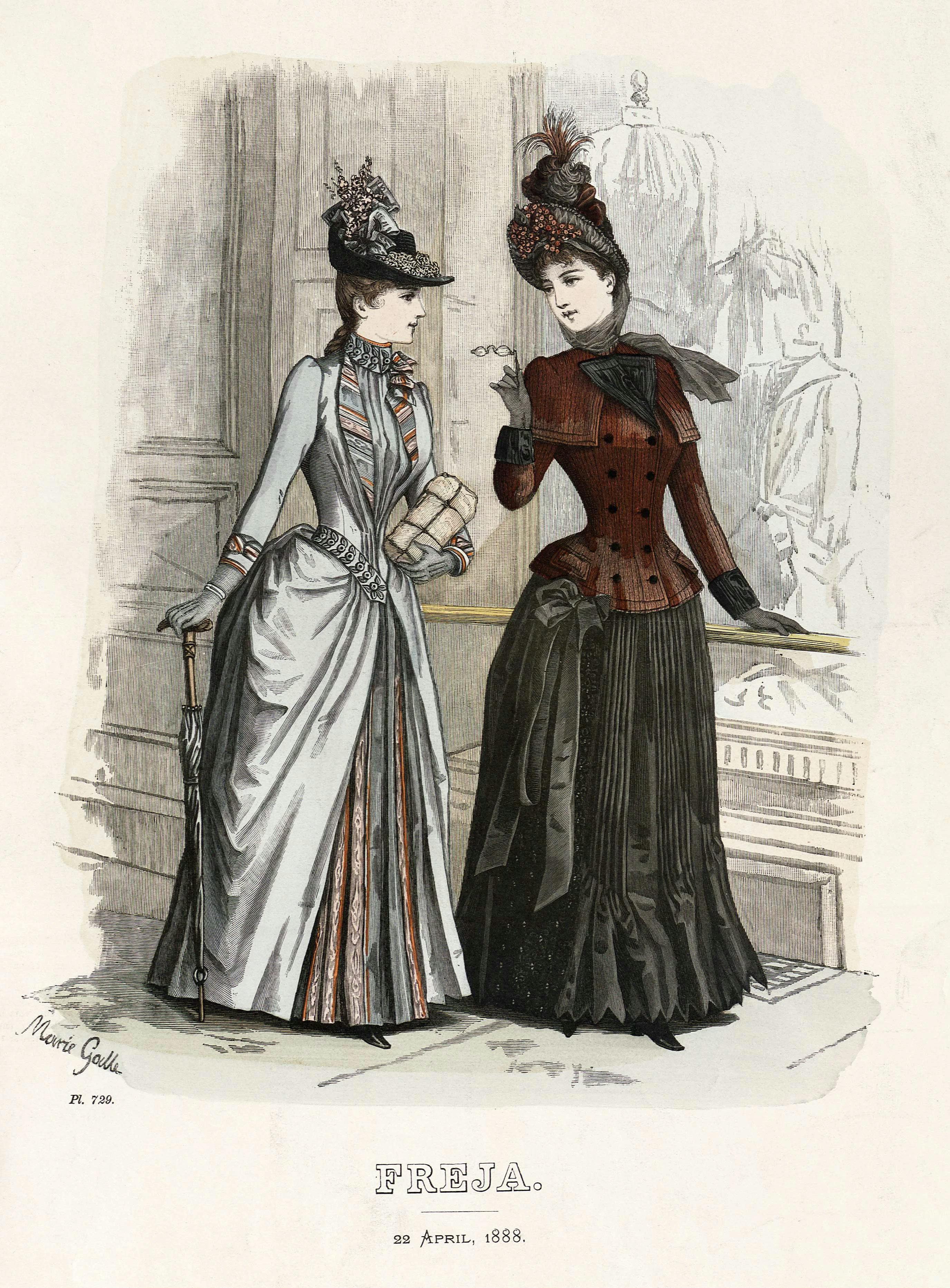
Fashion plate, 1888, via Wikimedia Commons.
But this only works in theory because people from that time didn't really understand that they couldn't control where the worm would attach itself. A tapeworm can attach itself to other organs or tissues outside the digestive tract and cause infections and some serious damage, as well as very unpleasant symptoms such as diarrhea, nausea, pain in the abdomen, fever, and weakness.
A Deadly Foundation Mix in Medieval Europe
For flawless-looking skin, Renaissance noblewomen wore makeup containing a deadly mix of white lead, vinegar, arsenic, hydroxide, and carbonate, applied to the face over egg whites.
The mixture gave them a silvery gleaming complexion, along with paralysis, madness, and death.
The 16th-century English nobles used similarly mixed cosmetics to whiten their faces with an even deadlier addition of mercury.
One of the most famous figures to use lead and mercury "foundation" was Queen Elizabeth I, who famously used it to cover her smallpox scars.
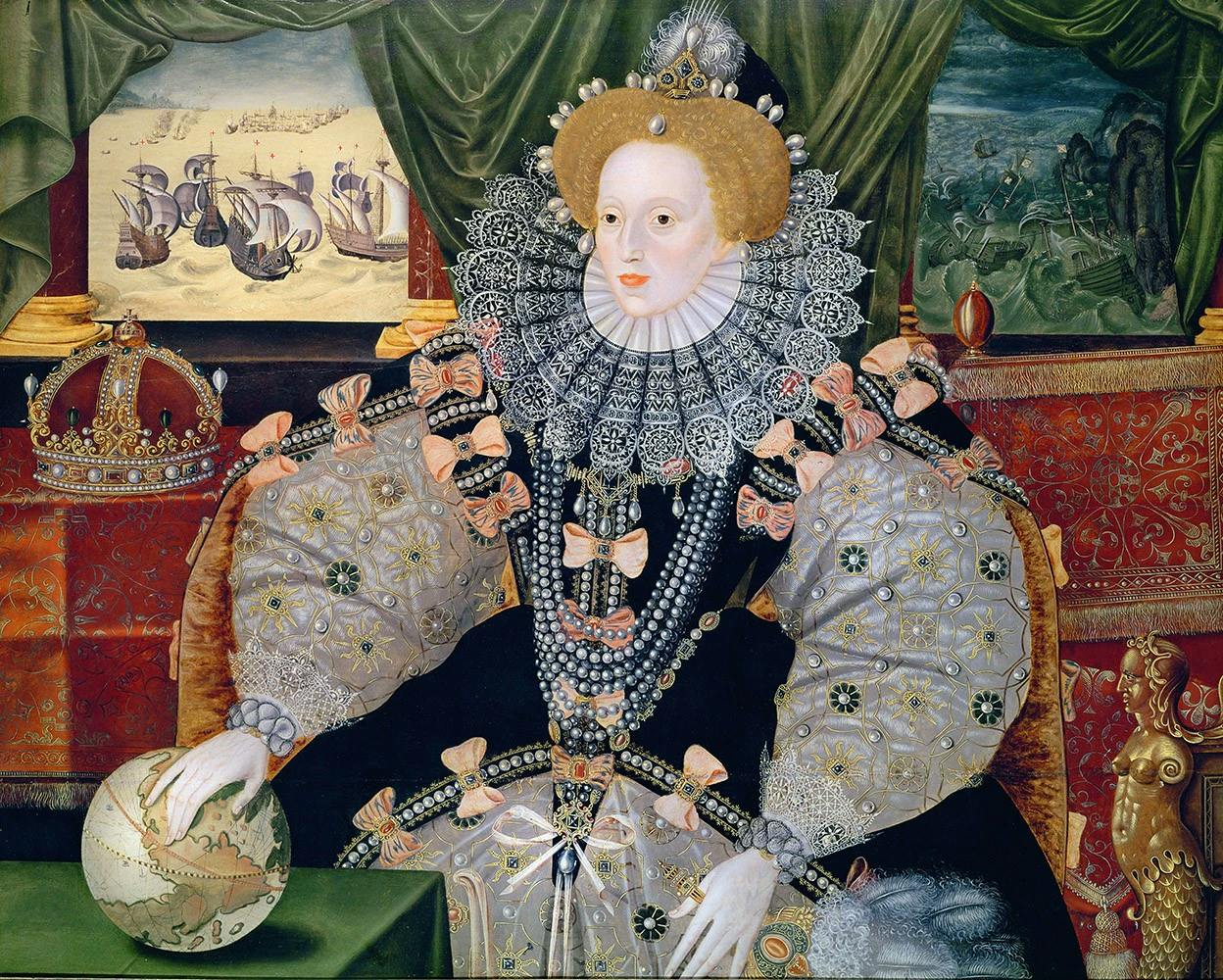
Queen Elizabeth I, on the occasion of defeating the Spanish Armada, circa 1588, via Wikimedia Commons.
It’s possible that Queen Elizabeth suffered from heavy metal poisoning, which caused her death. During the last years of her life, the queen was said to have lost her appetite and deteriorated mentally and physically.
She routinely erupted into temper tantrums with her ladies-in-waiting, who spent hours preparing her aged and pocked face for the public, and sometimes threw cosmetics and brushes at them.
The queen’s godson, Sir John Harington, noticed that she “doth not now bear with such composed spirit as she was once; but…seemeth more forward than commonly she used to bear herself towards her women.”
Leeches for a Pale Look in Italy
When it came to social events, it was common for Renaissance noblewomen to put leeches on their ears or cheeks to drain the blood from their faces.
This gave them a pale, drained complexion, which they complemented with a ton of blush on the cheeks while leaving other areas of the face almost transparent, a look that was so desired for the era.

Detail from Holy Family with St. Anne and the infant St. John the Baptist by Agnolo Bronzino, 1550. Via Wikimedia Commons
However, as you may assume, this beauty hack didn't come without its risks, and if it happened to be overused, women would end up suffering from skin lesions on the face and head, as well as nausea, dizziness, and loss of appetite.
Dimple Machines in the U.S.
High-tech inventions to improve your appearance have been around forever, but one of the weirdest (and the most recent on this list) is Isabelle Gilbert’s dimple machine, which hit the market in 1936.
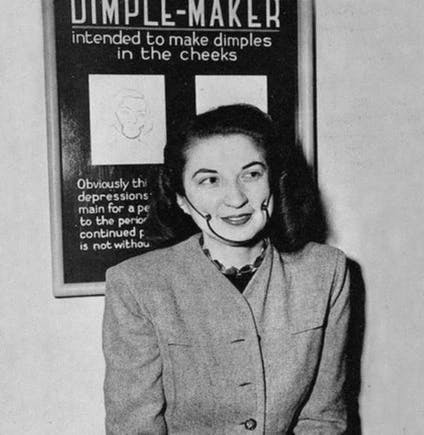
Woman wearing Isabelle Gilbert's Dimple Maker, via Wikimedia Commons.
For ladies who just didn't want to look at their faces without those two cute little divots, this machine – which consisted of spring-loaded knobs that pushed into the cheeks – was a lifesaver.
Unfortunately for the inventor, the dimple fad didn’t last too long, and wearing the contraption was incredibly uncomfortable.
However, even though this happened quite some time ago, the dimple mania hasn't gone anywhere, and dimples can be achieved today through a dimpleplasty, a surgical procedure that creates permanent dimples on the face.
Closing Thoughts
History never fails to shock us, especially when it comes to the bizarre and downright dangerous methods people used to come up with in order to achieve something important, like finding a partner, getting married, or just looking pretty.
Luckily, we've perfected the art of cosmetic improvements, so very little is needed to make yourself look presentable and confident nowadays.
Most women can achieve a simple and effortless look in as little as five minutes in the morning, so spending hours mixing and applying poisonous foundation on your face is definitely something we’re not going back to.
Which beauty practice from history did you find the most bizarre? Tell us in the comments!